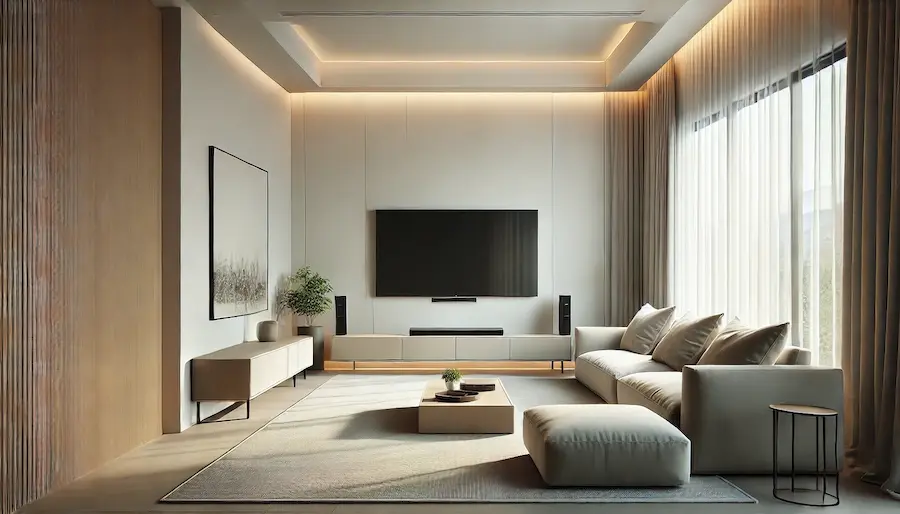A minimalist entertainment room embodies simplicity, functionality, and elegance, creating a serene environment for relaxation and leisure. This article delves into the history, key features, applications, and considerations for designing such a space.
History and Origins of Minimalist Entertainment Rooms
Minimalism emerged as an art and design movement in the mid-20th century, emphasizing the use of simple forms, clean lines, and a restrained color palette. In interior design, this philosophy translates to spaces that are uncluttered and purposeful. The integration of minimalism into entertainment rooms reflects a desire to create environments that are both functional and tranquil, allowing technology and leisure activities to coexist harmoniously within the home.
Key Features of Minimalist Entertainment Rooms
Minimalist entertainment rooms are characterized by several distinctive elements:
- Sleek, Built-In Furniture: Incorporating built-in entertainment centers with clean lines helps maintain an uncluttered appearance. These units often feature concealed storage to hide cables and devices, contributing to the room’s streamlined look.
- Neutral Color Palettes: Utilizing a monochromatic or neutral color scheme enhances the minimalist aesthetic, creating a calm and cohesive environment. Accents of natural materials, such as wood or stone, can add warmth without disrupting the simplicity.
- Functional Decor: Every item in the room serves a purpose, with decorative elements kept to a minimum. This approach ensures that the space remains free of unnecessary clutter, aligning with minimalist principles.
- Integrated Technology: Incorporating modern technology seamlessly into the design is essential. This includes wall-mounted televisions, discreet speakers, and smart home systems that enhance functionality without adding visual complexity.
Applications of Minimalist Entertainment Rooms
These spaces serve various functions within a home:
- Media Rooms: Designed for immersive viewing experiences, minimalist media rooms focus on high-quality audio-visual equipment within a simple, uncluttered setting. The absence of superfluous decor directs attention to the media content.
- Multi-Functional Living Areas: In open-concept homes, a minimalist entertainment area can seamlessly blend with other living spaces, providing a cohesive and adaptable environment for various activities. The minimalist approach ensures that the entertainment area does not dominate the space, allowing for versatility in use.
Considerations When Designing a Minimalist Entertainment Room
When planning a minimalist entertainment room, consider the following:
- Space Optimization: Assess the room’s layout to ensure efficient use of space, allowing for comfortable seating and unobstructed views of entertainment devices. Built-in furniture and wall-mounted equipment can free up floor space, contributing to a more open feel.
- Concealed Storage: Incorporate storage solutions that hide cables, media devices, and other accessories to maintain a clean and organized appearance. This might include cabinetry with hidden compartments or furniture designed to house electronic equipment discreetly.
- Lighting: Utilize ambient and task lighting to create a comfortable atmosphere, avoiding overly bright or harsh lighting that could detract from the minimalist aesthetic. Consider using dimmable lights or integrated LED solutions that complement the room’s design.
- Acoustic Considerations: Incorporate sound-absorbing materials, such as rugs or upholstered furniture, to enhance audio quality without adding visual clutter. These elements can improve the acoustics of the room while adhering to minimalist design principles.
Conclusion
A minimalist entertainment room combines functionality with aesthetic simplicity, creating a tranquil space for leisure activities. By focusing on essential design elements and thoughtful integration of technology, such a room can serve as a serene retreat within the modern home.
